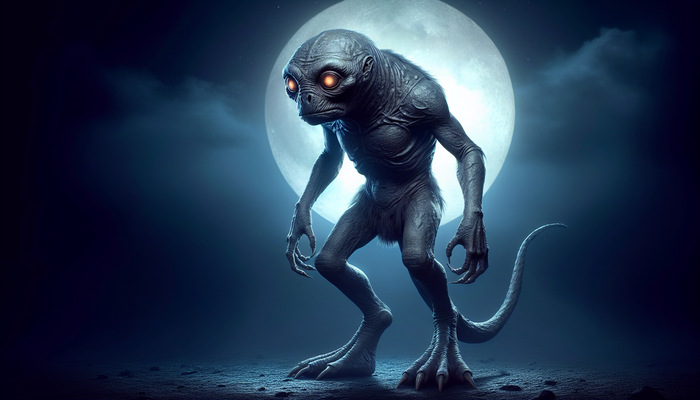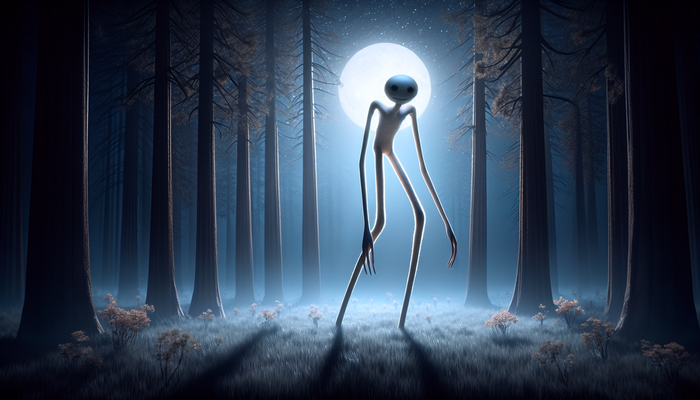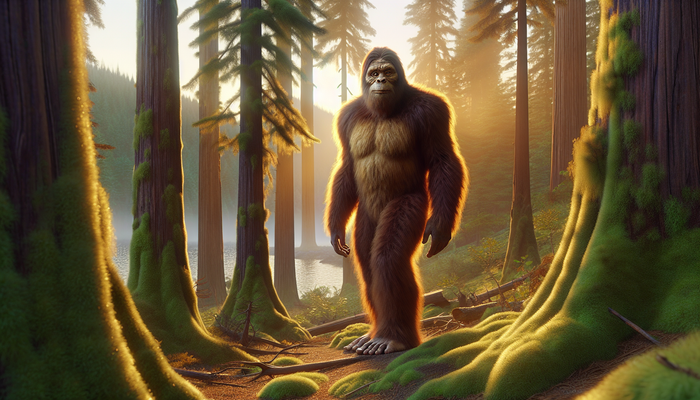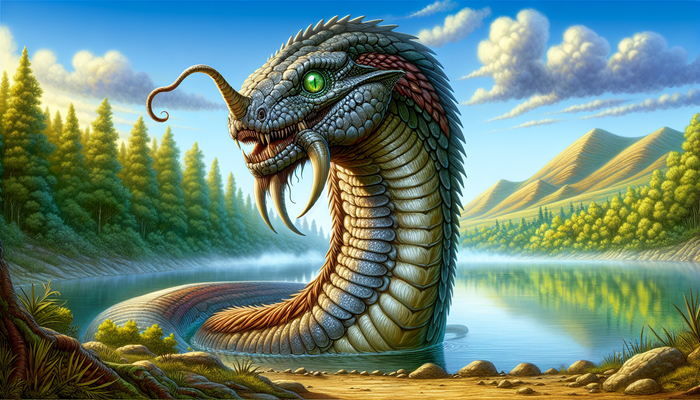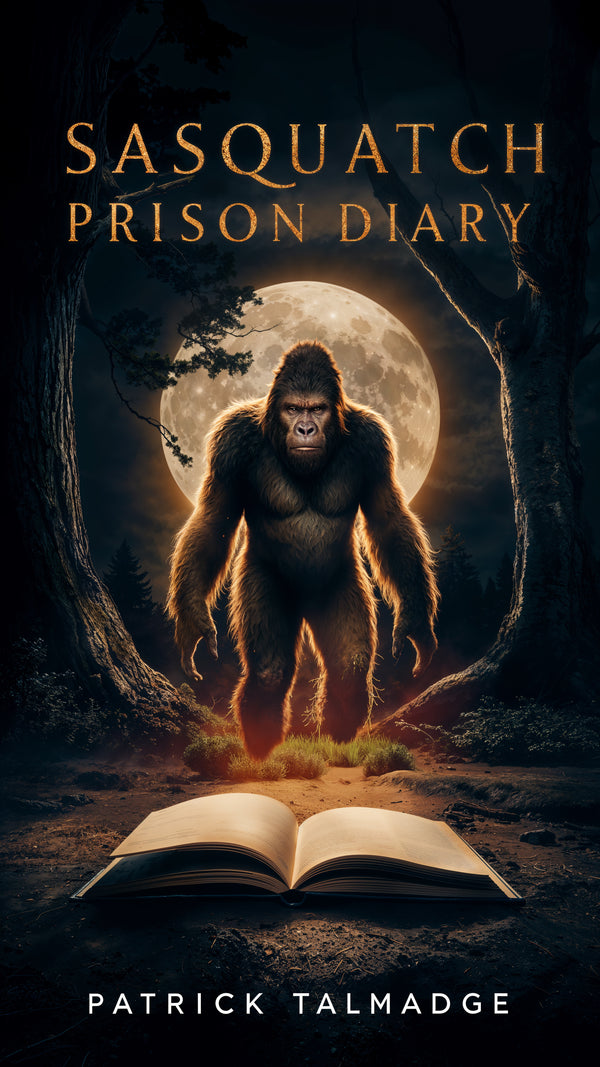The Chilling Legend of the Northfield Pigman
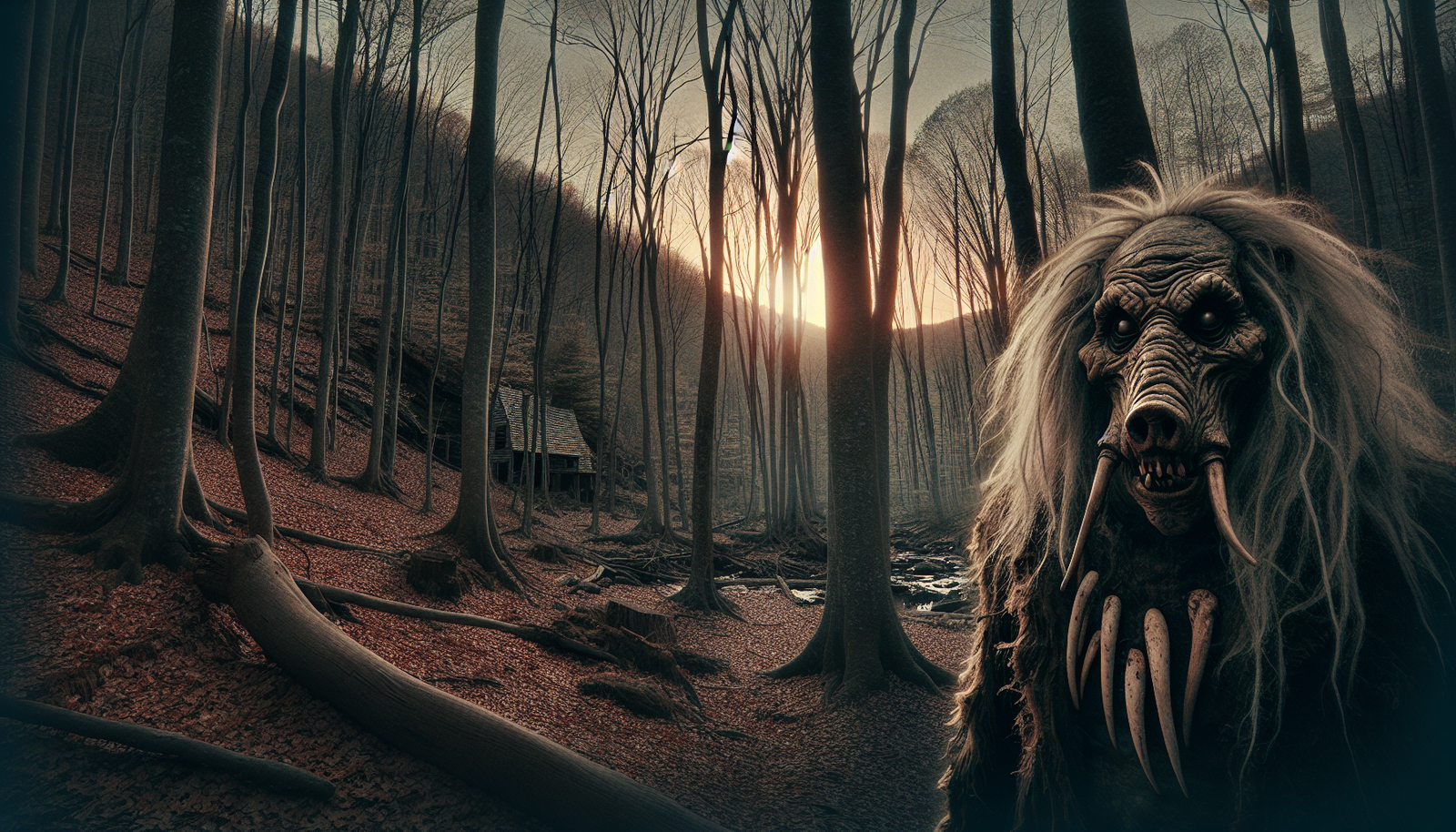
By Ava Martinez, Cryptozoologist
The Origins of the Legend
In the quiet town of Northfield, Vermont, nestled among rolling hills and dense forests, a chilling tale has taken root. It's a story that sends shivers down the spines of locals and visitors alike, a legend that has grown over decades to become an integral part of the town's identity. This is the story of the Northfield Pigman, a creature that blurs the line between myth and reality, challenging our understanding of the natural world and the power of human imagination.
The origins of this haunting tale trace back to a crisp autumn night in 1951, when the veil between our world and the unknown seemed particularly thin. It was October 30th, known locally as "Picket Night," a time when mischievous teens would engage in harmless pranks before Halloween. But on this fateful evening, one young prankster would unwittingly become the catalyst for a legend that would endure for generations.
Sam Harris, a spirited 17-year-old with a penchant for playful trouble, set out into the night with a basket of eggs, ready to partake in the time-honored tradition of "egging" houses. His friends recall him laughing as he disappeared into the darkness, promising to return with tales of his exploits. But Sam never came home.
The Disappearance of Sam Harris
The disappearance of Sam Harris sent shockwaves through the tight-knit community of Northfield. As dawn broke on Halloween morning, and Sam's absence became apparent, a frantic search began. Hundreds of locals combed the woods, calling Sam's name until their voices grew hoarse. Police dogs sniffed for any trace of the missing teen, while helicopters scanned the dense forest canopy from above. Days turned into weeks, and weeks into months, but not a single clue to Sam's whereabouts ever surfaced.
As hope for Sam's safe return dwindled, whispers of a darker fate began to circulate. Some spoke of ancient evil lurking in the woods, while others suggested that Sam had fallen victim to a twisted human predator. But it was the most outlandish theory that would ultimately take hold in the collective imagination of Northfield's residents.
The Birth of a Monster
The transformation of Sam Harris from missing teen to monstrous entity didn't happen overnight. It was a gradual process, fueled by fear, superstition, and the human need to make sense of the inexplicable. The first murmurs began at local diners and general stores, where elderly patrons would lean in close and speak in hushed tones of demonic possession and unholy pacts.
"You mark my words," one old-timer was heard saying, "that boy made a deal with the devil himself. Traded his soul for some kind of power, I reckon. And now he's out there, changed into something that ain't human no more."
These whispers grew louder and more elaborate with each retelling. Soon, the story evolved to include gruesome details of Sam's supposed transformation. It was said that he had taken to slaughtering pigs, devouring their entrails raw, and fashioning grotesque masks from their hollowed-out heads. The image of a once-ordinary teenager turned into a monstrous, pig-headed creature became firmly entrenched in local lore.
The First Sighting
But it wasn't until 1971, two decades after Sam's disappearance, that the legend of the Pigman truly took shape. On a warm September night, during a high school dance, a group of students snuck out to a nearby sandpit for some illicit drinking. Their laughter and chatter echoed through the trees until, suddenly, an eerie silence fell over the group.
Emerging from the shadows was a figure that would haunt their nightmares for years to come. Standing over six feet tall, its body was covered in coarse, white hair. But it was the creature's face that elicited screams of terror from the teens. Where a human visage should have been, there was instead the grotesque countenance of a pig – complete with a snout, beady eyes, and protruding tusks.
The students fled in panic, their cries alerting chaperones at the dance. When adults arrived at the scene, they found no trace of the creature, save for some trampled undergrowth and a lingering, foul odor. The teens' story spread like wildfire through Northfield, reigniting interest in the long-forgotten case of Sam Harris.
The Pigman Phenomenon
In the days that followed, more sightings were reported. A farmer on the outskirts of town claimed to have seen a similar figure rooting through his garbage bins late one night. When he shone his flashlight on the intruder, he swears the creature looked up at him with eerily human eyes before scampering off into the darkness on two legs.
Another resident reported hearing inhuman squeals and grunts coming from the woods behind her property. When she investigated the next morning, she found a trail of destruction – broken branches, churned earth, and most disturbingly, the half-eaten carcass of one of her pigs.
These incidents marked the beginning of a new chapter in Northfield's history. The Pigman was no longer just a cautionary tale told to misbehaving children; it had become a very real presence in the minds of the townspeople. Fear gripped the community, with parents forbidding their children from venturing into the woods alone and farmers keeping a closer eye on their livestock.
The Devil's Washbowl
As sightings continued to mount, attention turned to an area known as the Devil's Washbowl. This natural formation, characterized by its steep cliffs, winding streams, and numerous caves, became the focal point of Pigman activity. The ominous name, which predated the Pigman legend, only added to the area's mystique and foreboding atmosphere.
Local teenager Jeff Hatch, who would later become known as the unofficial historian of the Pigman legend, described his first visit to the Devil's Washbowl in the summer of 1972:
"It was like stepping into another world. The temperature dropped as soon as we entered the ravine, and the sunlight barely penetrated the thick canopy above. The sound of rushing water echoed off the rock walls, sometimes sounding like whispers or distant screams. We were there to look for signs of the Pigman, but honestly, I was more scared of the place itself. It felt... alive somehow, like it was watching us."
Jeff and his friends spent hours exploring the area, peering into dark cave openings and searching for tracks in the soft mud near the stream. While they didn't encounter the Pigman that day, they did make a chilling discovery in one of the larger caves.
"We found a pile of bones," Jeff recounted, his voice dropping to a whisper even years later. "Some were definitely animal – we recognized deer and what looked like pig bones. But there were others... larger bones that we couldn't identify. And carved into the cave wall above the pile was a crude drawing of a figure with a pig's head. We got out of there real quick after that."
The Legend Grows
The Devil's Washbowl became a proving ground for brave (or foolish) teenagers looking to test their courage against the legend of the Pigman. It wasn't uncommon for carloads of high schoolers to park near the entrance to the ravine on weekend nights, daring each other to venture inside. Most returned with nothing more than heightened adrenaline and overactive imaginations, but a few brought back stories that added new layers to the Pigman mythos.
Sarah's Encounter
One such account came from Sarah Jennings, who was a junior at Northfield High School in 1975. She and her boyfriend, Mike, had driven out to the Devil's Washbowl one Friday night, more interested in finding a secluded spot for romance than hunting monsters. As they sat in Mike's car, engrossed in each other, a sudden thud against the driver's side door shattered the mood.
"We both jumped," Sarah recalled. "Mike turned on the headlights, and that's when we saw it. The Pigman was right there, not three feet from the car. It was hunched over, but still taller than a man. Its body was covered in this patchy white hair, and the head... God, the head was just like they said. A pig's face, but with these horribly human eyes."
Sarah's story took an even more terrifying turn as she described what happened next. "It started scratching at the door, like it was trying to get in. The sound was awful – this screeching of claws on metal. Mike floored it, and as we peeled out, I looked in the side mirror. The Pigman was chasing us, running on two legs but faster than any person could. We didn't stop until we got back to town."
The couple's experience, complete with deep scratches on the car door as evidence, became one of the most widely circulated Pigman stories. It sparked a new wave of interest in the creature, drawing amateur monster hunters and paranormal investigators to Northfield from across New England.
Theories and Explanations
As the legend grew, so too did the theories about the Pigman's true nature and origins. While many still clung to the idea that it was Sam Harris, transformed by some dark force, others began to propose alternative explanations.
The Folklorist's Perspective
Dr. Eleanor Simmons, a folklorist from the University of Vermont, offered a more rational perspective. "The Pigman legend bears striking similarities to other cryptid stories from around the world," she explained. "We see elements of the Sasquatch or Bigfoot myth, combined with the human-animal hybrid concept found in legends like the Werewolf or the Minotaur. It's likely that the Pigman is a manifestation of our collective fears and anxieties, particularly those related to the wilderness and the unknown."
Simmons pointed out that the timing of the Pigman's emergence – in the early 1970s – coincided with a period of social upheaval and changing values in America. "Small towns like Northfield were grappling with the influx of new ideas and the erosion of traditional ways of life," she said. "The Pigman could be seen as a symbol of these fears, a monstrous embodiment of the 'other' that threatens to disrupt the community."
The Supernatural Theory
Others took a more supernatural approach to explaining the Pigman. Local paranormal investigator Rick Boudreaux proposed that the creature was a manifestation of the land itself. "The Devil's Washbowl has a long history of strange occurrences," Boudreaux claimed. "Native American legends speak of it as a place where the veil between worlds is thin. The Pigman could be a spirit or elemental force that has taken physical form, perhaps drawn by the energy of Sam Harris's disappearance."
Boudreaux's theory, while dismissed by many as pseudoscience, gained traction among those who believed in the interconnectedness of the natural and spiritual worlds. It also provided a convenient explanation for why the Pigman seemed to be confined primarily to the Northfield area, rarely venturing beyond the boundaries of the town.
The Conspiracy Theory
A third, more controversial theory emerged in the late 1980s, proposed by retired biology teacher Howard Grayson. "What if the Pigman is the result of a secret government experiment?" Grayson mused in a self-published pamphlet that circulated through Northfield. "We know that the military has conducted all sorts of classified tests, including attempts at human enhancement. Perhaps Sam Harris stumbled upon something he wasn't supposed to see, and was used as a test subject for some kind of human-animal hybrid program."
While Grayson's theory was widely ridiculed, it tapped into a vein of distrust in authority that resonated with some members of the community. It also spawned a subset of Pigman hunters who began searching for evidence of hidden government facilities in the woods around Northfield.
The Pigman's Impact on Northfield
Despite the varying theories, one thing remained constant: the Pigman's impact on the town of Northfield. What had started as a local legend had grown into a defining characteristic of the community, for better or worse.
Commercialization of the Legend
Local businesses began to capitalize on the Pigman's notoriety. The Crossroads Diner introduced a "Pigman Platter" to its menu – a heaping plate of bacon, ham, and sausage that promised to "satisfy even the most monstrous appetite." The Northfield General Store started selling Pigman t-shirts and keychains to curious tourists passing through town.
Perhaps the most notable example of Pigman-inspired commerce came from the Good Measure Brewing Company, which introduced a popular "Pigman Lives" IPA. The beer's label featured a stylized depiction of the creature lurking in shadowy woods, and it quickly became the brewery's best-selling product.
Community Reactions
But not everyone was happy with the commercialization of the legend. Some longtime residents felt that it trivialized the very real tragedy of Sam Harris's disappearance. Others worried that it might attract the wrong kind of attention to Northfield, turning their quiet community into a circus for thrill-seekers and paranormal enthusiasts.
Despite these concerns, the Pigman had undeniably become a part of Northfield's identity. It was a source of fascination for children, who would dare each other to venture into the woods at night. It was a topic of heated debate among adults at town meetings and in the letters section of the local newspaper. And for many, it was a reminder of the mysteries that still lurked in the world, even in the age of science and reason.
Environmental Impact
The legend also had a profound impact on how the people of Northfield related to their environment. The woods that surrounded the town, once seen as a place of natural beauty and resource, took on a more sinister aspect. Parents warned their children not to stray too far into the forest, and even seasoned hunters admitted to feeling uneasy when alone in the deep woods.
This shift in perception led to some unexpected consequences. As fewer people ventured into the wilderness around Northfield, local wildlife populations began to rebound. Birdwatchers reported seeing species that hadn't been common in the area for decades, and game cameras set up by researchers captured images of healthy deer, bear, and even the occasional moose.
"In a way, the Pigman has become an accidental conservationist," remarked Dr. Lydia Chen, an ecologist studying the region's ecosystem. "By keeping people out of certain areas, it's allowed nature to reclaim some of its territory. It's an interesting example of how folklore can have real-world impacts on the environment."
The Legend Lives On
As the years passed, sightings of the Pigman became less frequent, but the legend showed no signs of fading away. If anything, the creature's elusiveness only added to its mystique. Each generation of Northfield residents seemed to have its own Pigman story to tell, keeping the legend alive and evolving.
Modern Resurgence
In 2015, the legend received a boost from an unexpected source. A popular television show called "Monsters and Mysteries in America" featured a segment on the Northfield Pigman, bringing national attention to the local legend. The episode included interviews with longtime residents, reenactments of famous sightings, and even some shaky footage purporting to show the creature moving through the trees near the Devil's Washbowl.
While many in Northfield were skeptical of the show's sensationalized approach, it sparked a renewed interest in the Pigman among younger residents. Social media buzzed with Pigman-related hashtags, and a group of tech-savvy teens even developed a smartphone app that allowed users to report and map potential Pigman sightings.
Community Response
This resurgence of interest led to a town meeting in 2016, where the community gathered to discuss how to handle the influx of curiosity-seekers and amateur monster hunters. Some argued for embracing the tourism potential, while others advocated for measures to protect the town's privacy and natural areas.
In the end, a compromise was reached. The town would acknowledge its unique folklore through carefully managed events and educational programs, while also implementing stricter regulations on access to sensitive areas like the Devil's Washbowl. It was a delicate balance between honoring the legend and preserving the community's way of life.
Final Words
Today, the Pigman remains an integral part of Northfield's cultural fabric. While sightings are rare, the creature's presence is felt in the stories passed down through families, in the art and literature produced by local creators, and in the way the town relates to its forested surroundings.
For some, like Jeff Hatch – now in his sixties and still regarded as the town's foremost Pigman expert – the legend is as vital as ever. "People ask me if I really believe in the Pigman," he said during a recent interview. "I tell them that's not the point. The Pigman is real because we've made him real. He's a part of our history, our identity. He reminds us that there's still mystery in the world, still things we can't explain. And maybe, just maybe, he's out there right now, watching and waiting for the next chapter of his story to unfold."
As night falls over Northfield, and the forests grow dark with shadow, one can't help but feel a tingle of excitement – or is it fear? – at the thought of what might be lurking just beyond the tree line. The legend of the Pigman serves as a reminder that even in our modern, interconnected world, there are still tales that can send a shiver down our spines and make us question what we think we know about the nature of reality.
Whether seen as a tragic figure, a terrifying monster, or a symbol of the unknown, the Pigman of Northfield continues to capture the imagination of all who hear his story. And as long as there are dark woods and unanswered questions, the legend will live on, a testament to the power of folklore and the enduring human fascination with the mysterious and the unexplained.
From Bigfoot to UFOs: Hangar 1 Publishing Has You Covered!
Explore Untold Stories: Venture into the world of UFOs, cryptids, Bigfoot, and beyond. Every story is a journey into the extraordinary.
Immersive Book Technology: Experience real videos, sights, and sounds within our books. Its not just reading; its an adventure.


